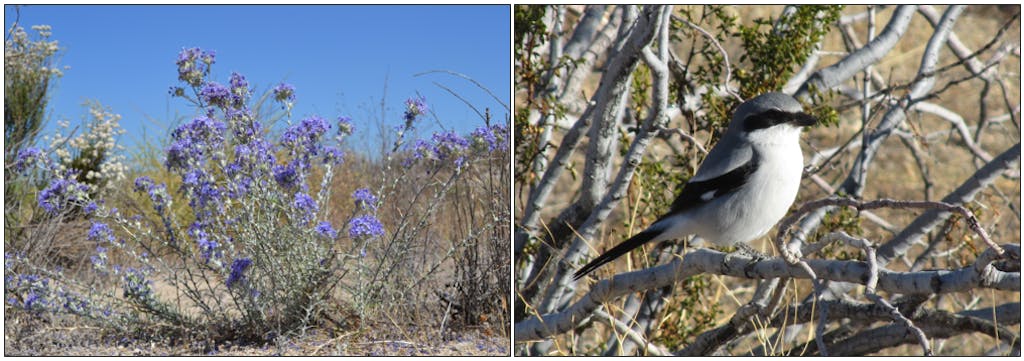Environmental Stewardship
Protecting Our Endangered Species


Western Division
1,300 Acres Under Conservation Management
The Cajon Conservation Bank opened in 1996 and covers more than 1,300 acres that are preserved in perpetuity and managed as wildlife habitat.
The active wash and streambed at Cajon Wash and Lytle Creek support all phases of Riversidian Alluvial Fan Sage Scrub (RAFSS), a sensitive plant community. It is home to more than 30 listed or other Special Status Species, including the endangered San Bernardino kangaroo rat, Santa Ana River woolly star, the slender-horned spineflower, and the threatened coastal California gnatcatcher.
The Cajon Creek Conservation Bank is home to the Burrowing owl and the Horned lizard.
“The Cajon Creek Conservation Bank provides an efficient and effective means of fulfilling mitigation requirements,” said Mike Linton, Vice President of Vulcan Materials Company Western Division. “Cajon Creek is the only bank in the area that is approved by all three permitting agencies.”
Conservation banks provide permanent protection of threatened natural areas or habitat for threatened or endangered species. Conservation banks also undertake the restoration and management of these sites to maintain their natural resource value in perpetuity. Under state and federal laws, public and private development projects that must provide mitigation to offset unavoidable impacts to the environment can purchase credits from approved conservation banks to fulfill these requirements. The addition of acreage to the Cajon Creek Conservation Bank’s existing mitigation acreage further increases the supply of mitigation credits available to meet the demands for both public works infrastructure projects as well as land development.

The giant woolly star and the Loggerhead shrike have been seen at Cajon Creek Conservation Bank.
“The Cajon Creek Conservation Bank’s mitigation credits offset the impact of development projects in the Santa Ana Watershed through the preservation of natural open space, threatened habitat and endangered species,” said Linton.